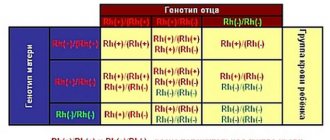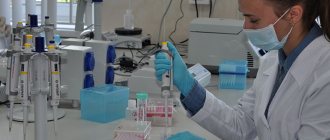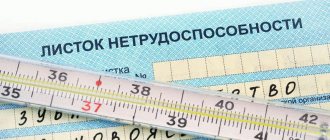Genetic testing is the most popular type of modern research. DNA analysis can reveal the accuracy of certain situations. For example, a DNA test confirms or denies paternity.
If it is necessary to establish a relationship with a child, it is recommended to contact an expert institution, submit biomaterial and receive a conclusion with the results of the study, which are given with a probability of more than 99%.
Main factors influencing the cost of a DNA test
The final cost of the DNA paternity test procedure depends on the following factors:
- the presence of various markers of biological material;
- quality of the research subject;
- urgency of performing laboratory tests;
- research method (traditional, invasive and non-invasive).
In some cases, a DNA test can be done for only 5-7 thousand rubles. However, such a price is unlikely to give a reliable result, so you should not save money - you need to order the service in specialized laboratories that have the appropriate certificates. Therefore, if you want to get a 100% result, you should contact licensed medical institutions such as Lab-DNK.
Photo of DNA and its structure
What does a DNA molecule look like? The discovery of the deoxyribonucleic acid molecule was made by the Swiss biologist Friedrich Miescher in 1869. At that time, nothing was known about this molecule: neither its structure nor its biological functions.
The fact that deoxyribonucleic acid is a carrier of information about the development and functioning of the entire organism became known only in 1944. In 1953, scientists used X-rays to irradiate the molecule and, using data compiled from the rays reflected by the molecule, compiled the first diagram of its structure.
Invasive method of genetic paternity analysis
Invasive, i.e. the prenatal DNA test is the most accurate and gives a 100% result. To organize it, it is necessary to obtain biological material from the alleged father, mother and child. If there are no problems with sampling in the first two cases, then it is quite difficult to take the child’s cells for research. After all, for analysis it is necessary to obtain amniotic fluid and blood from the umbilical cord. In the earliest stages of pregnancy, starting from the 9th week, it is recommended to collect chorionic villi. But, in all cases, it is necessary to puncture the abdominal cavity with the insertion of a special needle into the uterus.
Important! This DNA test for establishing paternity during pregnancy
carries a certain danger to the fetus. Since during the collection of biomaterial, an infection can be introduced into the uterus or a miscarriage can be caused.
Whether it’s worth the risk is, of course, up to the customer of the procedure to decide. Doctors will definitely do everything possible to avoid complications. But the Lab-DNK laboratory does not recommend such testing, preferring non-invasive analysis.
Non-invasive antenatal test
The danger of an invasive research method forces many to abandon it and turn to a non-invasive research method. The difference between them is that in the latter case the biological material of the child is not required, i.e. When collecting biomaterial, there is no interference in the intrauterine space. Therefore, the DNA test does not pose any danger to the baby.
Take a paternity test in Rostov
a non-invasive method is simple if you donate the mother’s blood, from which cells with the child’s DNA will be sifted out. Plus, blood is taken from the alleged father.
Take a paternity test
Using DNA, researching biological material is very easy. It involves the collection of biomaterial from the mother, father and child, starting from infancy. The subject of research is often a swab taken from the inside of the cheek with a cotton swab. Biomaterials such as lost hair, nail clippings, saliva from hygiene items, blood, etc. may also be suitable.
The duration of such a study is approximately seven days. In some cases, the Lab-DNK laboratory offers genetic testing within a few days. Of course, the price of an urgent DNA paternity test
will be slightly higher.
Latest articles:
- How to find out the gender of the unborn child without an early ultrasound?
- NIPT for a happy pregnancy
- DNA test for ethnic origin - frankly and to the point
- DNA analysis to help athletes
- Innovative definition of ethnicity
Article prepared by:
Petrov Dmitry Member of the Integrated Scientific Group Lab-DNA
DNA testing process to establish paternity
What do you need to do a DNA paternity test?
All that is needed to perform a DNA paternity test are DNA samples from the alleged father, the child in question, and the child's mother (her participation is optional but recommended).
How to perform a DNA paternity test?
There are two parts to all paternity tests: collecting DNA from test participants and then testing and analyzing the samples in a laboratory.
How DNA is collected
- DNA for paternity tests is extracted from the epidermal cells of the participants' inner cheeks, which are collected using a simple, painless swab
- Each participant is provided with four tampons; Using one at a time, the tip of the swab is pressed firmly against the inside of the cheek to collect DNA. An adult test taker can swab a child or infant
- The swabs are then placed in paper envelopes; paper containers allow the organic material on the swabs to “breathe” and prevent mold contamination when they are sent to the laboratory. If the swabs seem too wet, wave them in the air for a few minutes to dry them out a bit before putting them in the paper envelopes.
- In some rare cases of the postpartum period, a blood sample can still be used to obtain a DNA sample, but today cheek swabs are the norm. DNA collected with a swab from the inside of the cheek is as reliable for testing as DNA extracted from blood
How is performed in the laboratory
- DNA is extracted from each participant's cells and then amplified (multiplying the number of DNA molecules) to make the sample more workable
- At least 16 STR STR markers are analyzed for each participant (DDC baseline is 20 markers) using Short Tandem Repeat (STR) Analysis to collect genetic information for each marker
- The geneticist uses this data when performing a calculation of the probability that the person being tested is the biological father of the child being tested
Can a DNA paternity test be done at home?
Collecting DNA samples to establish paternity can be done at home if you want the results for your information and peace of mind only If you need results for any legal reasons, such as financial support or criminal investigations, then you should order a legal, certified paternity test instead of a home test.
For home test:
- You can order a DNA sample collection kit online or even pick it up at your local pharmacy
- When you receive a kit from a store, you pay the retailer for the kit and then make a separate payment to the lab to complete the test once you are ready to test
- Collect DNA samples at home, register the kit with DDC online, and then send sample swabs directly to the laboratory
- When the test is completed, a results report is sent to a secure online account or can be mailed to you. For security reasons, reports are never delivered by email
Pro Tip: Your DNA test kit from DDC comes with a USPS mailer. Samples sent in this mailer may take up to 10 business days to reach our laboratory. If you need results faster, pay a little more to ship samples via FedEx or UPS.
Where can you order a legal DNA paternity test?
In order for paternity test results to be admissible in court, the collection of samples and their delivery to the laboratory must be supervised by an approved, disinterested third party. Here's how it works:
- Call the laboratory directly to request a legal test
- The laboratory will schedule an appointment (or appointments) for participants at an approved DNA collection facility near you
- The DNA testing kit is then sent directly to the collection site
- Participants arrive at the appointed time (they do not have to all be present for the same procedure for other participants)
- A designated collector checks identification documents, receives, photographs participants, and supervises (or performs) the collection of DNA samples
- The DNA collector fills out the necessary documents and forms that are included with the samples when they are sent to the laboratory
When the test is ready, a results report is sent to a secure online account or can be delivered by mail. For security reasons, reports are never delivered by email.
Because the chain of custody and collection of samples is controlled by a disinterested third party throughout the DNA collection process, and the identities of test participants are documented, only legal tests like the one described above can provide court-admissible results.
How long does it take to get results?
Once samples arrive at the laboratory, DDC's standard turnaround time for paternity testing is two (2) business days, although 1-day results and same-day results are available at an additional cost.
How accurate are the results?
At DDC, each test is run by two separate teams to ensure accuracy, so you can be confident that the results will be accurate for the samples you submit for testing. As mentioned, the results of legal, certified paternity tests from an accredited laboratory are accepted as proof of paternity by the courts and may also be used for immigration purposes.
IMPORTANT FACT: The only difference in the testing process between a home paternity test and a legal paternity test is how the DNA samples are collected. Once the samples reach the laboratory, the testing process is identical in both cases.
How to Interpret Paternity Test Results
Accreditation bodies require laboratories to use specific legal language when reporting a DNA paternity test. Here's what it means, put into simpler language:
is determined to be based on testing results , the report contains the following :
- A statement stating that the alleged father is not excluded as the biological father of the child being tested. This means that based on statistical calculations he cannot be excluded as the putative father and is considered the biological father of the child
- The Composite Paternity Index ( CPI ) is a calculated metric that determines the chances that a man being tested is the father of a child. For example, a CPI of 43,110,000 means that there is a 43,110,000 to 1 chance that someone other than the subject was the biological father.
- Probability of paternity , which is given as a percentage, is an indicator that this person is the father. This typically has a value of 99.9% or higher, it should be read as: There is a 99.9% chance that this person is the biological father of this child.
If the man is not recognized as the biological father, the report contains the following :
A report stating that the alleged father is excluded as the presumed biological father of the child being tested. This means that he cannot be considered the biological father.
Composite Paternity Index ( CPI ), which is a measure of the chances that a man is the father of that child. For cases where paternity is excluded, this number is always 0.
Probability of paternity , which is reported as a percentage, is an indicator of the likelihood that this person is the father of the child participating in the test. For cases where paternity is excluded, this number is always 0.











